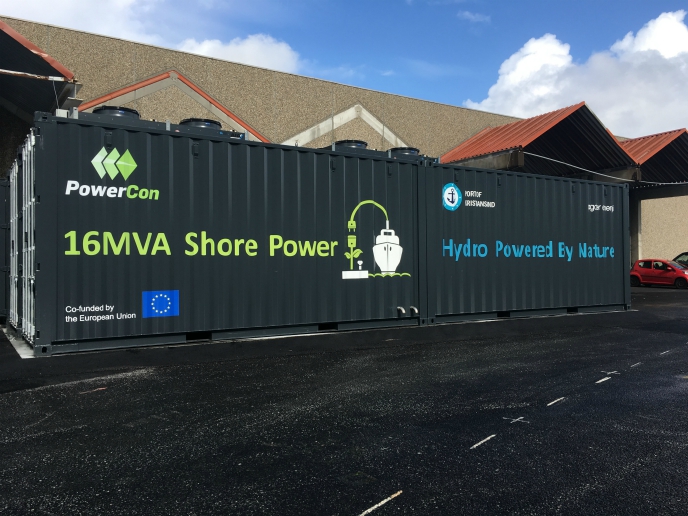Ships powered up with dock-side green energy
Nowadays, ports are rarely equipped to supply vessels with electricity from the shore, nor are vessels usually equipped to receive power in this way. Typically, the energy required for berthed ships is generated by the vessels’ own auxiliary engines, which run an electricity generator. The auxiliary engine consumes diesel or heavy oil to produce electricity but it also generates toxic exhaust gases, noise and vibrations. Onshore power supply (OPS) can play a key role in improving local air quality and cutting noise pollution in ports, while limiting climate change devastation. Despite the clear environmental gains, OPS implementation has so far been slow in the maritime sector. Unfavourable EU legislation European initial recommendations on boosting air quality in ports through OPS date back to 2007. “Until that time, the electricity produced from the combustion of bunker fuel was tax-exempt. What’s more, when ships at berth were plugging into the shore-side electricity system, they had to pay taxes applied to electricity,” explains Peter Castberg Knudsen, co-owner at PowerCon(opens in new window). The situation completely changed when the Energy Taxation Directive put use of shore-side electricity on an equal footing with electricity generated via combustion of tax-exempted bunker fuel on board ships. “Large cruise ships’ auxiliary power usage at quayside can measure up to 16 MW. This is comparable to the electrical power consumption of a small European city with 10 000 inhabitants,” notes Castberg Knudsen. “Studies estimate that if all seagoing and inland ships in European harbours in 2020 were to use shore-side energy to cover their energy demand at berth, they would consume 3 543 GWh annually. This is the equivalent to 0.1 % of the electricity consumption of Europe as a whole in 2012.” Varying electrical frequencies Most cruise ships have a different electrical voltage and frequency onboard compared with what is onshore in the normal electrical grid. Most tend to be fitted with 60 Hz onboard electrical systems. Other shore systems require expensive converters to adapt to ships operating on 50 Hz. The technology to be fitted both onboard and onshore is expensive. With EU funding of the project LoCOPS(opens in new window), PowerCon successfully overcame this barrier. “The LoCOPS system can be seen as a large and advanced power outlet that can convert the frequency and voltage level to match the characteristics onboard the vessel,” explains Castberg Knudsen. The newly developed OPS system meets the required international standards IEC/ISO/IEEE 80005-1 (cable connection between shore and ship on the medium voltage side). Voltages of 6.6 and 11 kV are both provided in the 50- and 60-Hertz ranges. The novelty of this new compact system lies in the fact that it has been adapted from a renewable energy system from wind turbines. This makes it extremely cost effective compared to competing solutions. Next steps Achieving competitive prices on green power supplied to large vessels such as cruise ships brings us a step closer to a more sustainable society. “Over the last 20 years, significant progress has been achieved in developing and commercialising use of power electronics. The trend is likely to continue with ever more competitive prices and higher-performance systems,” concludes Knudsen.







